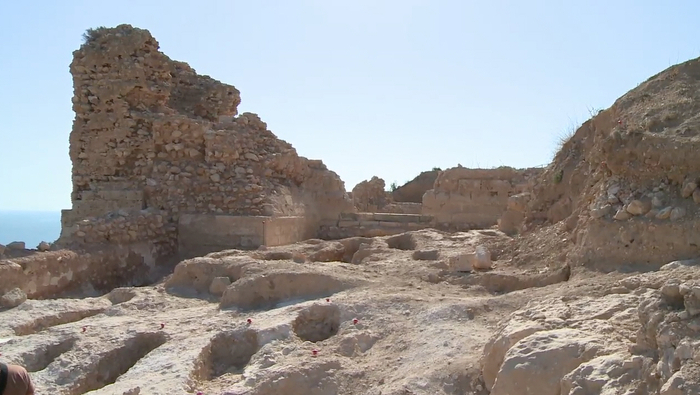- Region
- Águilas
- Alhama de Murcia
- Jumilla
- Lorca
- Los Alcázares
- Mazarrón
- San Javier
-
ALL AREAS & TOWNS
- AREAS
- SOUTH WEST
- MAR MENOR
- MURCIA CITY & CENTRAL
- NORTH & NORTH WEST
- TOWNS
- Abanilla
- Abarán
- Aguilas
- Alamillo
- Alcantarilla
- Aledo
- Alhama de Murcia
- Archena
- Balsicas
- Blanca
- Bolnuevo
- Bullas
- Cañadas del Romero
- Cabo de Palos
- Calasparra
- Camping Bolnuevo
- Campo De Ricote
- Camposol
- Canada De La Lena
- Caravaca de la Cruz
- Cartagena
- Cehegin
- Ceuti
- Cieza
- Condado de Alhama
- Corvera
- Costa Cálida
- Cuevas De Almanzora
- Cuevas de Reyllo
- El Carmoli
- El Mojon
- El Molino (Puerto Lumbreras)
- El Pareton / Cantareros
- El Raso
- El Valle Golf Resort
- Fortuna
- Fuente Alamo
- Hacienda del Alamo Golf Resort
- Hacienda Riquelme Golf Resort
- Isla Plana
- Islas Menores & Mar de Cristal
- Jumilla
- La Azohia
- La Charca
- La Manga Club
- La Manga del Mar Menor
- La Pinilla
- La Puebla
- La Torre
- La Torre Golf Resort
- La Unión
- Las Palas
- Las Ramblas
- Las Ramblas Golf
- Las Torres de Cotillas
- Leiva
- Librilla
- Lo Pagan
- Lo Santiago
- Lorca
- Lorquí
- Los Alcázares
- Los Balcones
- Los Belones
- Los Canovas
- Los Nietos
- Los Perez (Tallante)
- Los Urrutias
- Los Ventorrillos
- Mar De Cristal
- Mar Menor
- Mar Menor Golf Resort
- Mazarrón
- Mazarrón Country Club
- Molina de Segura
- Moratalla
- Mula
- Murcia City
- Murcia Property
- Pareton
- Peraleja Golf Resort
- Perin
- Pilar de la Horadada
- Pinar de Campoverde
- Pinoso
- Playa Honda
- Playa Honda / Playa Paraíso
- Pliego
- Portmán
- Pozo Estrecho
- Puerto de Mazarrón
- Puerto Lumbreras
- Puntas De Calnegre
- Region of Murcia
- Ricote
- Roda Golf Resort
- Roldan
- Roldan and Lo Ferro
- San Javier
- San Pedro del Pinatar
- Santiago de la Ribera
- Sierra Espuña
- Sucina
- Tallante
- Terrazas de la Torre Golf Resort
- Torre Pacheco
- Totana
- What's On Weekly Bulletin
- Yecla


- EDITIONS:
 Spanish News Today
Spanish News Today
 Alicante Today
Alicante Today
 Andalucia Today
Andalucia Today
Calpe Today
 The Peñon d'Ifach in Calpe is one of the most recognizable features of the Costa Blanca
The Peñon d'Ifach in Calpe is one of the most recognizable features of the Costa Blanca
The coastal municipality of Calpe in the Marina Alta area of the province of Alicante is one of those which has become practically synonymous with seasonal and residential tourism in the Costa Blanca, and even now, when almost the whole of the coastline has become a tourist destination, is among the most attractive in south-eastern  Spain.
Spain.
It is hardly possible to think of Calpe without the image of the Peñón d’Ifach leaping to mind. This is a massive outcrop of rock which rises to a height of 332 metres above the Mediterranean, and is connected to the mainland by a narrow isthmus. Nowadays it dominates the skyline of the town, but in the past it was actually home to a fortified hillside settlement, the Pobla d’Ifach, which was built by Roger de Lluria in the years after the Reconquista of south-eastern Spain, in the late 13th century. This medieval fortress was abandoned when the population moved down to the mainland, and only now are the remains, including those of a church dedicated to Nuestra Señora de los Ángeles, being excavated.
Many years before that, other civilizations had also occupied the area of Calpe, including, of course, the Romans. Evidence of the Roman occupation can still be seen at the Baños de la Reina, a series of seawater pools in which fish and seafood were kept until required as fresh food.
As well as archaeologists and climbers, the Peñón d’Ifach is also a major attraction for divers as the water around it has been declared a marine reserve, while the municipality of Calpe is also blessed with another natural park in the saltwater lagoon which lies just a short distance inland. Again there is evidence here of the Romans having used  these flats to extract salt, but nowadays its main significance is a stop-off point for migrating birds.
these flats to extract salt, but nowadays its main significance is a stop-off point for migrating birds.
During the Late Middle Ages the population of Calpe had to protect themselves against frequent Berber pirate raids from north Africa – in 1637 the town was sacked and 290 residents were taken hostage in Algeria for five years - and from that period there are plenty of fortified buildings in and around the town. These include the Casa Nova, the Torreón de la Peça (the bastion where the defensive artillery was located) and the Ermita de San Juan, a fortified farmstead and small church in the Tosal de la Cometa area. At the same time, the old church in the town centre is also fortified, providing a stark contrast with the light, airy, Iglesia de las Nieves, which dates from the 1970s.
On either side of the Peñón are numerous beaches, ranging from long stretches of sand such as the Playa del  Arenal and the beaches of Cantal Roig and Fosa to coves including Les Bassetes and el Mallorquí, and these provided the basis for the initial surge in tourism in the mid-20th century, when tourism replaced fishing and agriculture as the mainstay of the local economy.
Arenal and the beaches of Cantal Roig and Fosa to coves including Les Bassetes and el Mallorquí, and these provided the basis for the initial surge in tourism in the mid-20th century, when tourism replaced fishing and agriculture as the mainstay of the local economy.
Alongside these beaches, the old town centre of Calpe still retains a charming atmosphere, with narrow streets and staircases the defining features, but most of the residential tourism is in the outlying residential districts which practically fill the coastal plain between the Mediterranean and the mountains.
A review in the way statistics are compiled has resulted in the official population of Calpe dropping from 30,000 to 23,500 in recent years, but even so the fact that the figure stood at 10,000 as recently as 1991 demonstrates how  sought-after this area was in the late 20th and early 21st centuries. Large numbers of those moving to the Marina Alta in that period were northern European expats, and nowadays just under half of the town’s population consists of non-Spaniards as a result.
sought-after this area was in the late 20th and early 21st centuries. Large numbers of those moving to the Marina Alta in that period were northern European expats, and nowadays just under half of the town’s population consists of non-Spaniards as a result.
The extent to which the non-Spanish population has been welcomed in Calpe is that the highlights of the annual fiestas programme now include not only the Fallas in March and the night of San Juan in June, but also one of the largest Oktoberfest beer festivals in Spain!
The way in which the developments inhabited by the foreign residents have occurred, though, has mostly been consistent with the desire not to harm the natural beauty of the area, and a walk along the coastal path and cliffs underlines that this has been achieved, cementing the reputation of Calpe for being one of the most emblematic locations in the Costa Blanca.
CALPE
































